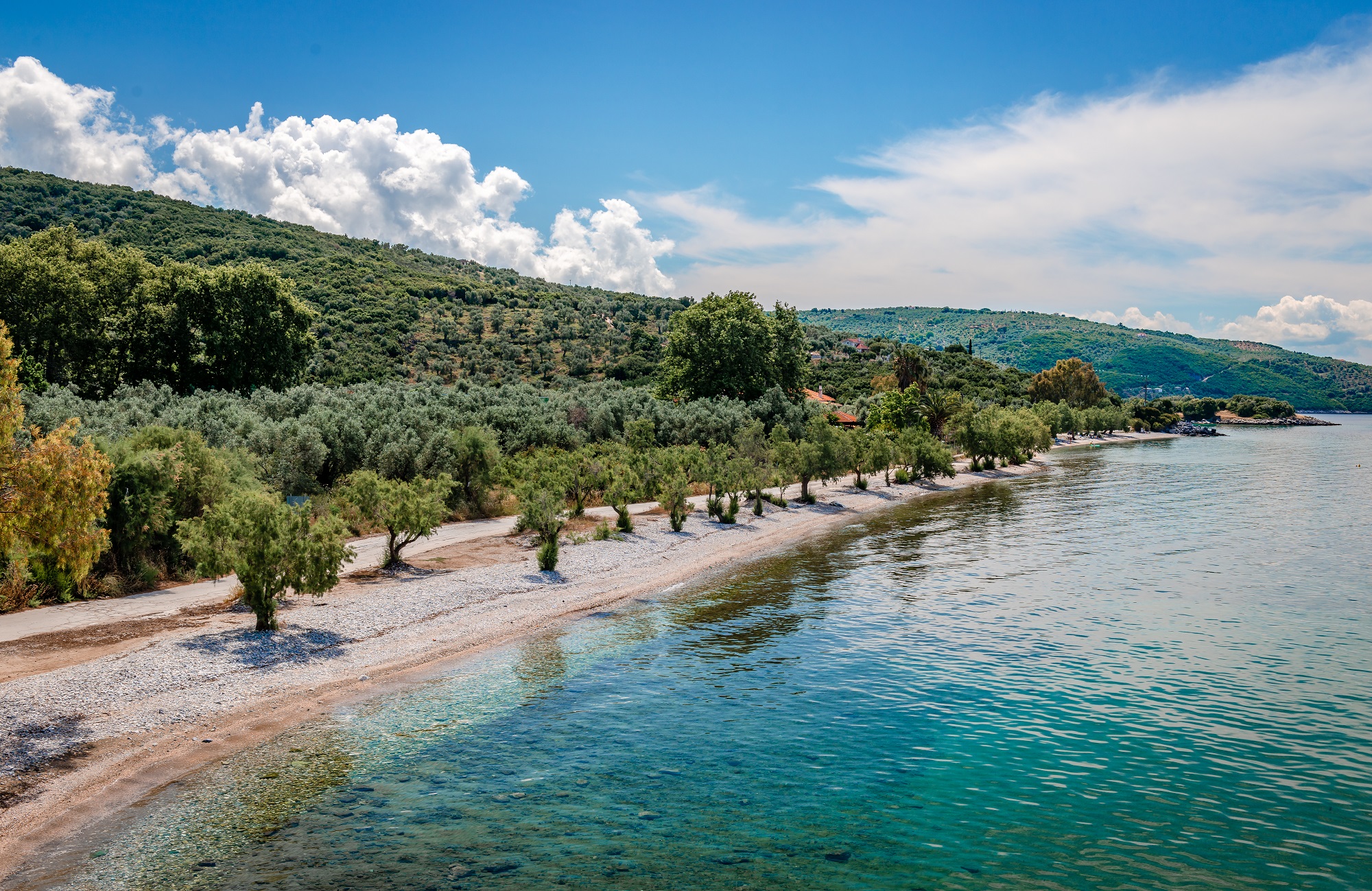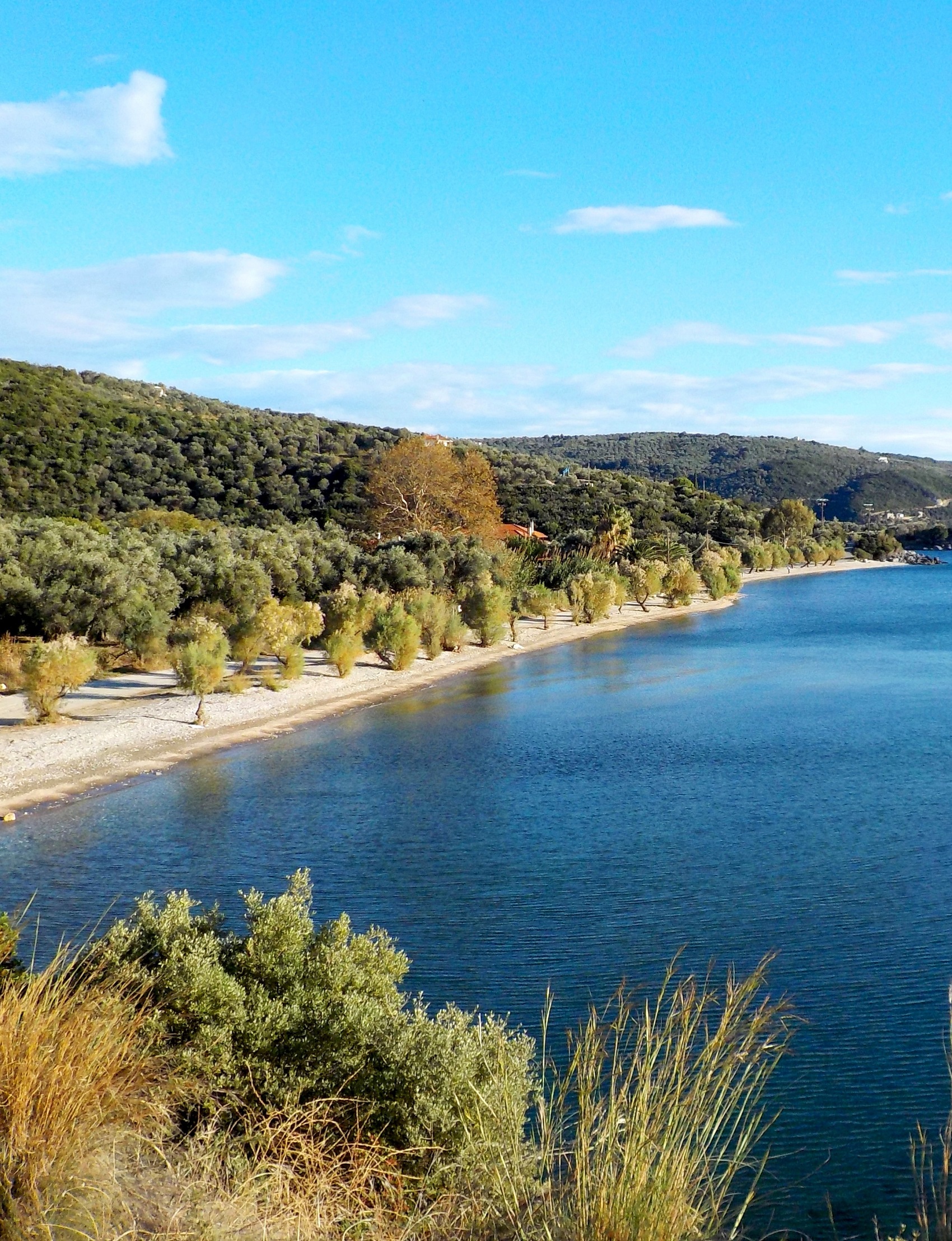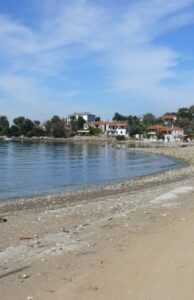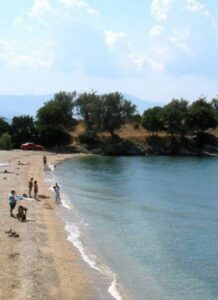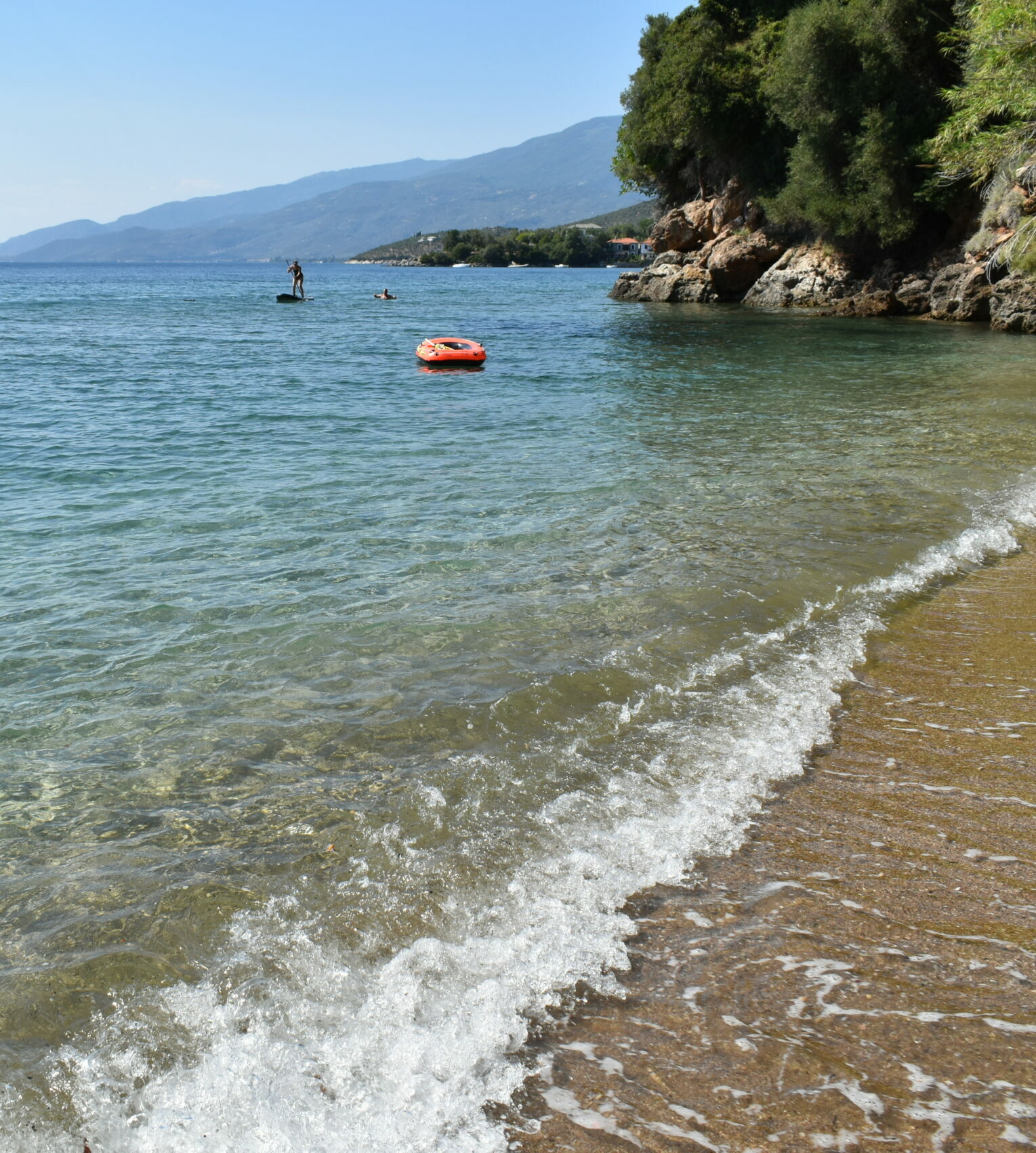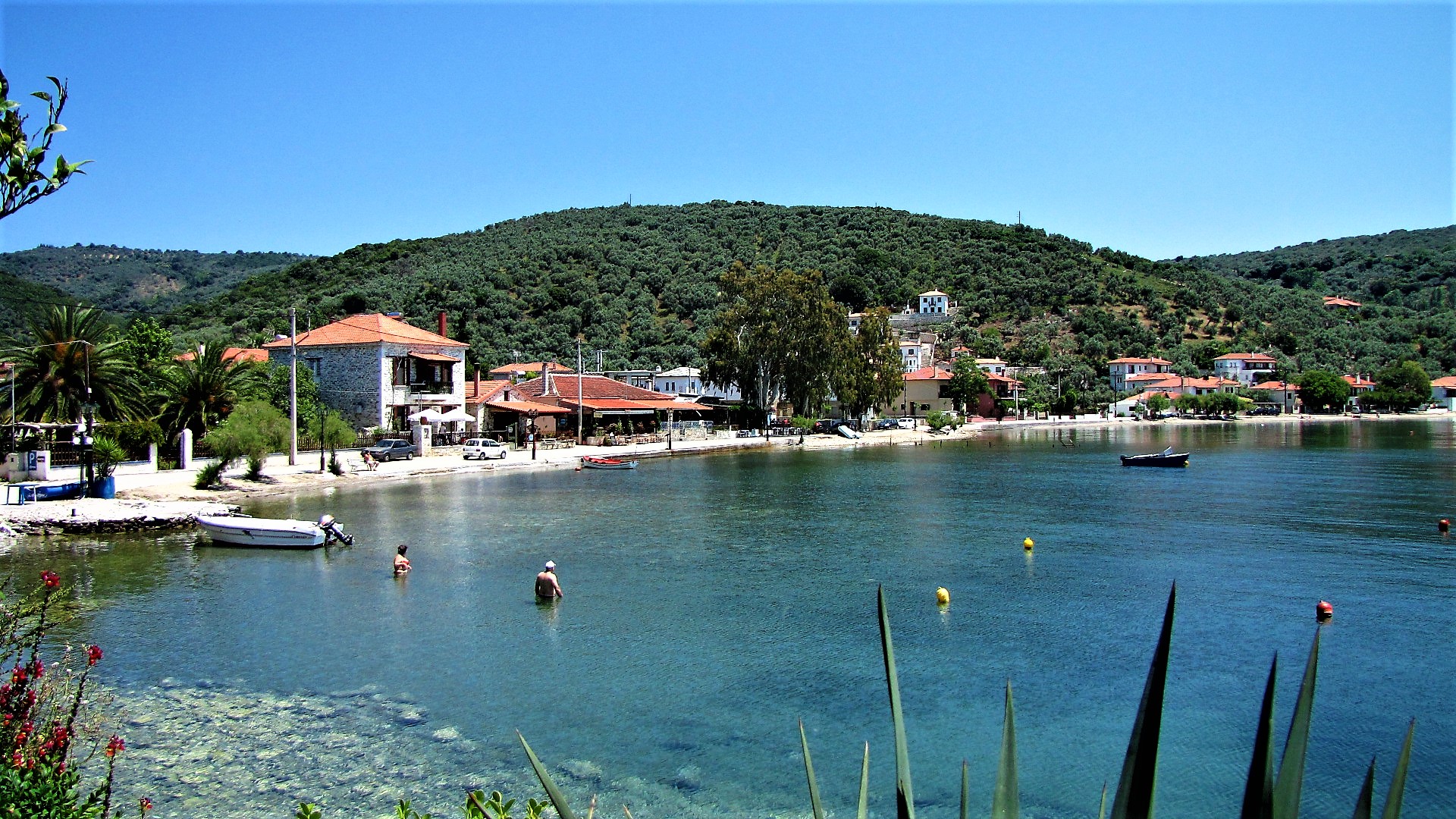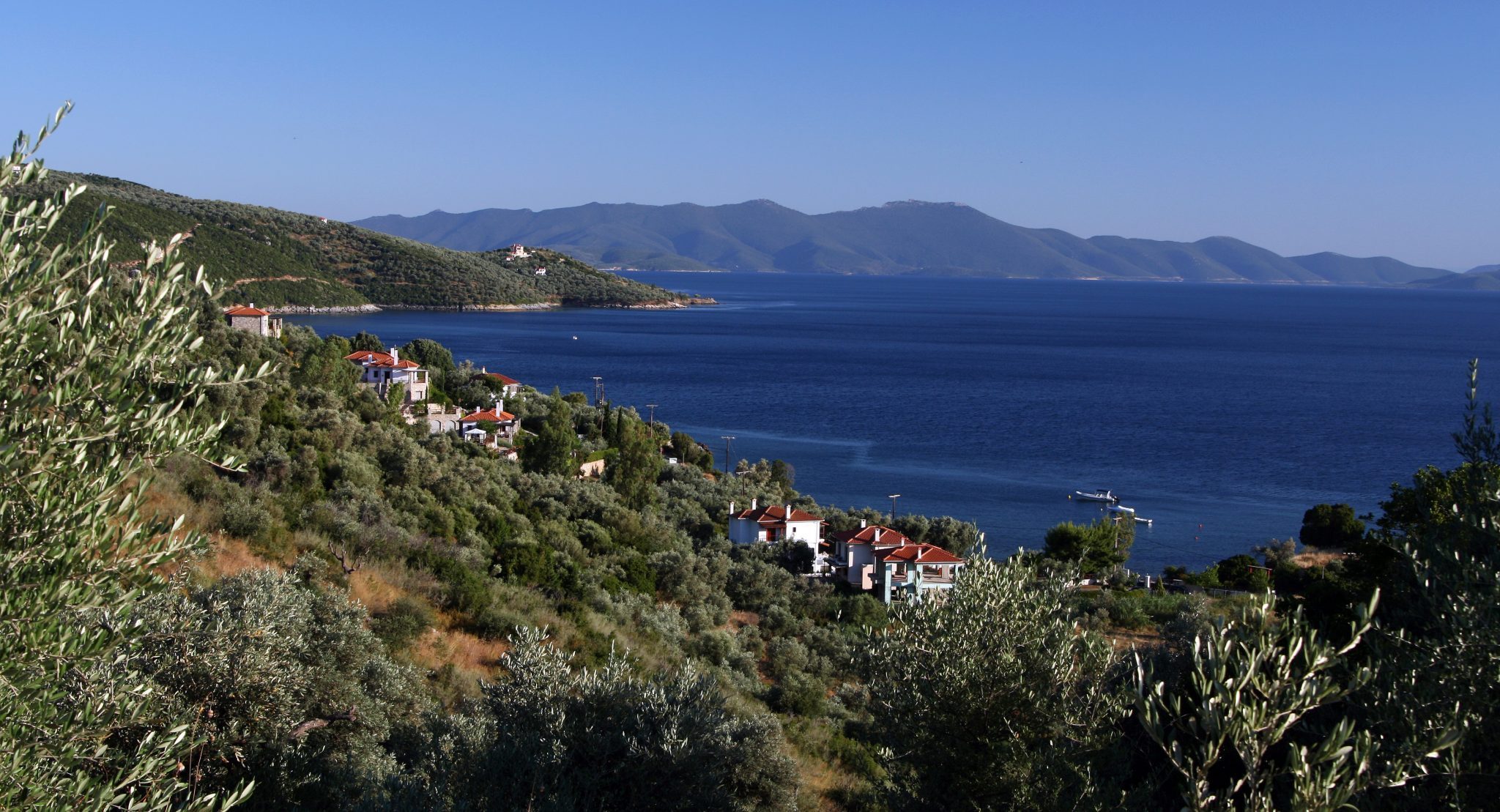When people think of “Pelion“, their minds often wander to cozy winter breaks with a little skiing thrown in, or charming villages with large, cobbled squares perched on lush slopes, brimming with natural and traditional charm. Yet this image only scratches the surface of the remarkable “Mountain of the Centaurs”.
The other aspect of Pelion’s character is painted by its close proximity to the Pagasetic Gulf, framed by villages blessed with splendid beaches. In essence, these are landscapes that embody the rare and wonderful coexistence of mountain and sea, positioning Pelion as an idyllic haven for all seasons.
Several of these seaside locales have indeed morphed into bustling summer hotspots for a multitude of holidaymakers, as is the case with Agios Ioannis or beaches such as Mylopotamos and Damouchari. But for those who yearn for a quieter approach to tourism, there are fully established retreats that remain relatively unknown, purposely nurturing a sense of tranquility. Lefokastro, a typical, scenic fishing village of Pelion, with inviting coasts perfect for a swim, is a shining example of such a place.
A Snapshot of Lefokastro
Stone houses crowned with reddish, ceramic-tiled roofs peek from a landscape abundant in greenery, with foliage reaching right up to the water’s edge. This is the first sight you’re greeted with upon arrival in Lefokastro, and it isn’t misleading: this is a delightful, quintessential Pelion fishing village, absent of hidden corners, promising days of peace and relaxation in the splendid setting conjured by the mountain and the waters of the Pagasetic Gulf.
Located geographically in southern Pelion, Lefokastro is a coastal village with a modest population of 73 residents, as recorded in the 2011 census. Its inception seems to have dissolved into the annals of time, remaining elusive due to the lack of mention in available sources. Its name too remains a mystery, with various theories put forth – it could be an echo of some medieval “white castle” that once stood here, constructed from white stones, while some believe that the term “lefkó” is a distortion of the word for licking, ‘gleifo’, suggesting the location is “licked by the sea”.
The Greek origin of the name likely ties the roots of Lefokastro to archaeological discoveries, which pointed to the existence of a Byzantine settlement north of the village’s small peninsula, just a stone’s throw from the sea. This settlement seems to have first taken shape in the late 4th century, preserving its identity well into the depths of the Middle Ages. The Church of Panagia, which now dominates the centre of the contemporary village, was erected on the ruins of a former temple from the Byzantine era. However, further systematic and comprehensive research is needed to more distinctly unveil the settlement’s past.
Today, wandering around the village, the main draw is its natural beauty and the beaches. It’s worth making a detour to visit the well-crafted arch bridge, constructed in 1891, a symbol of the region’s traditional stone architecture, and the even older spring (also known as the “Great Spring”): established in 1777 during the Turkish rule, it still carries an inscription bearing the name of its benefactor, Ahmet Aga.
Despite its petite size, Lefokastro also features four beaches for visitors during the summer season or for those who begin their bathing as early as mid-May. The most immediate one upon arrival is the unorganised pebble beach, which unfurls right in front of the village centre: the waters are pristine and relatively shallow, making it ideal for families with young children, with local establishments conveniently nearby to cater to all your needs.
The most popular beach in the vicinity is Razi, situated just a brief distance outside the official boundaries of Lefokastro, on the way to Afissos. This untouched coastline is characterised by pure, crystal-clear waters, and is lined by trees (tamarisks) that extend almost to the sea, providing ample shade for beachgoers. Also, just as you leave the village limits, you’ll come across Agia Euthymia beach (affectionately known as ‘Agiathymia’ by the locals), which is adjacent to a small peninsula. For those in pursuit of a bit of an adventure, there’s Gournas beach. This verdant sandy stretch is only accessible on foot, via a stone path that winds its way through Lefokastro. The path runs alongside a stream, leading you towards a secluded, picturesque cove, nestled among reeds and cypresses. It’s worth sticking around here until late afternoon to witness the sunset.
Accommodation – Coffee – Food
Despite remaining relatively under the radar and retaining its serene character, Lefokastro is a place that has embraced sustainable tourism, and as a result, there is a variety of stellar accommodation options for those who decide to stay a few days. Most of these lodgings are self-catering apartments or entire houses functioning as boutique hotels, or properties listed on platforms like Airbnb.
As a representative choice, Hero Apartments is a mere stone’s throw from the central beach, making it an ideal choice for families with small children. Directly overlooking the sea, with a pergola-covered terrace providing views over the Pagasetic Gulf, you’ll find Nikoleri Studio & Apartments. Towards Agia Euthymia, there’s Anthyllion Villa and Traditional Luxury House Kedavros, located 400 metres from the beach – with an open-air patio and a garden offering a stunning view. On Razi beach, your destination might be the Razi Beach cottages, providing direct access to the sea, and featuring an outdoor swimming pool and a tennis court.
Just like other coastal regions of Greece, your options for coffee and food often converge. If coffee is your goal, drop by Sunset, which doubles as a beach bar and also serves snacks. For dinner, head to Stefanos taverna or Oasis restaurant-cafe, where, among other things, you can indulge in fresh fish and seafood.
How to Get Here
Lefokastro is 34 kilometres from Volos and comfortably accessible by road. You can expect to reach the village in roughly 50 minutes. For hiking enthusiasts, there’s the marked circular route Argalasti – Lefokastro – Kalamos, considered one of the most picturesque trails in southern Pelion.
You will commence from the square in Argalasti, which is 8 kilometres from Lefokastro, and descend towards the village, before continuing to the also coastal Kalamos. This requires approximately 2 hours and 45 minutes, and you should anticipate an equivalent duration for the return journey. While in Lefokastro, it’s advised to replenish your drinking water supplies.
Read also:
Top Traditional Cafes on the Mountain of Pelion



